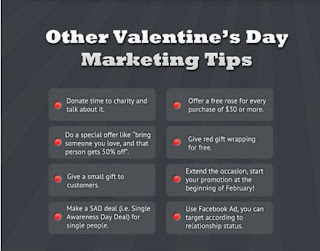Why', 'Who', 'What', 'How' and 'So
What - building any marketing communication plan must involve
answering these key questions (refer The 5 Questions of Marketing
Communication - Are You Answering These? ). I find that once the intent behind carrying out a marketing program is
clear we must look at the 'Who' and this comes to down the basics of
marketing - targeting and segmenting.
Who constitutes my key target base?
Brand awareness, product promotion or, lead generation - Unless
one knows WHO the intended target is one cannot hope to achieve the end purpose
of any marketing program. Moreover, defining the target segment will shape what
your communication will constitute and the channels that you would deploy.
For example, is your target the end consumer (i.e. are you a B2C
organization) or, are other businesses your prospects (a B2B model)? Depending
on this you can identify if ATL marketing techniques will serve the purpose or,
BTL channels are more suited.
Take the case of an IT product for a B2B market. If your target
audience is the C-level then your communication should be talking about how a
solution impacts the overall business, cost vs. returns, benefits to the
end-consumer, and other such variables. On the other hand, if the target is C-1
and C-2 level contacts then you must look at talking about the product features
and functionalities, and the benefits to the organizations (like, streamlined
processes, system integration, etc).
How do I go about getting the database in place?
Starting from ground zero has both its positives and negatives.
The main minus obviously being that it’s a time consuming process which
required resource investments to validate the contact list. On the plus side,
you would be working towards getting a fresh list in place - one with the right
contact designation and, the latest email ids and phone numbers.
One can employ various ways to get an enviable list into place -
· Buy a ready list - There
are a numerous agencies and third parties available in the market who have a
large database available based on industry and designations. By buying a list
you immediately cut down the effort your resources would have to put in to get
such a list together. But, the problem with buying a list is you can never be
sure if you will get your intended audience. To avoid this, while finalizing
your third party vendor, it is best to specify the below points.
o Ensure
you share the right industry and right designation title so a close to prefect
list is provided to you.
o Do a test
run of the list - for example, send across a free whitepaper (behind
registration) to download to this list. Based on the success rate of this
activity you can then further negotiate with the vendor.
· Build a list - Have a
internal discussion with your sales team and identify a list of the companies
you wish to interact with. Then get the vendor or, even an internal resource,
build a list for you based on the exact designations for this list . This
generally has a high success rate as you can be sure your list consists of
prospects of interest.
· Continuous build activities- Online
forms, registration desks at events, online webinars or, free content
registrations - these are some the ways you can ensure adding on relevant
contacts to your database
How
do I maintain my database?
It is absolutely essential that your database is constantly
validated and updated. Research shows that databases degrades by around 25% every
year as people move out of the company or, change their numbers or,
move to different roles. Revisit your list, with the help of an internal
resource or even a third-party, once every 6 months.
Having
a consolidated view of your organization's database also helps in ensuring
there is only one reference source. It just won't do if each of your sales has
a different contact number for the same business prospect. Today, there are
numerous CRM systems in the market that you can deploy in your organizations.
Not only a CRM system helps get a consolidated view of your database, you can
also track the multiple touch-points that your sales team has had with a
particular contact and further streamline your future communications.
How can I use my database?
Activities like email marketing, telemarketing will always be
heavily dependent on your database. In addition, a good database can ensure you
have the right invitation list ready for your next event. And don't forget to
strengthen your relationships by sending out ecards on special occasions. If
your sales can manage then do add details like birthdays, anniversaries.
A company I worked with also used such a list to build up a
subscription base for its quarterly print and online magazine. The magazine
highlighted business problems and opportunities in that specific market. We
soon had a very strong target audience who were quite open to giving interviews
and point of views for upcoming issues. Such interactions help build the
business brand and provides you with invaluable content to leverage.
 This
picture found on the internet gives a good summary of the 7Ps. (www.jerichoconsulting.co.uk/)
This
picture found on the internet gives a good summary of the 7Ps. (www.jerichoconsulting.co.uk/) 












